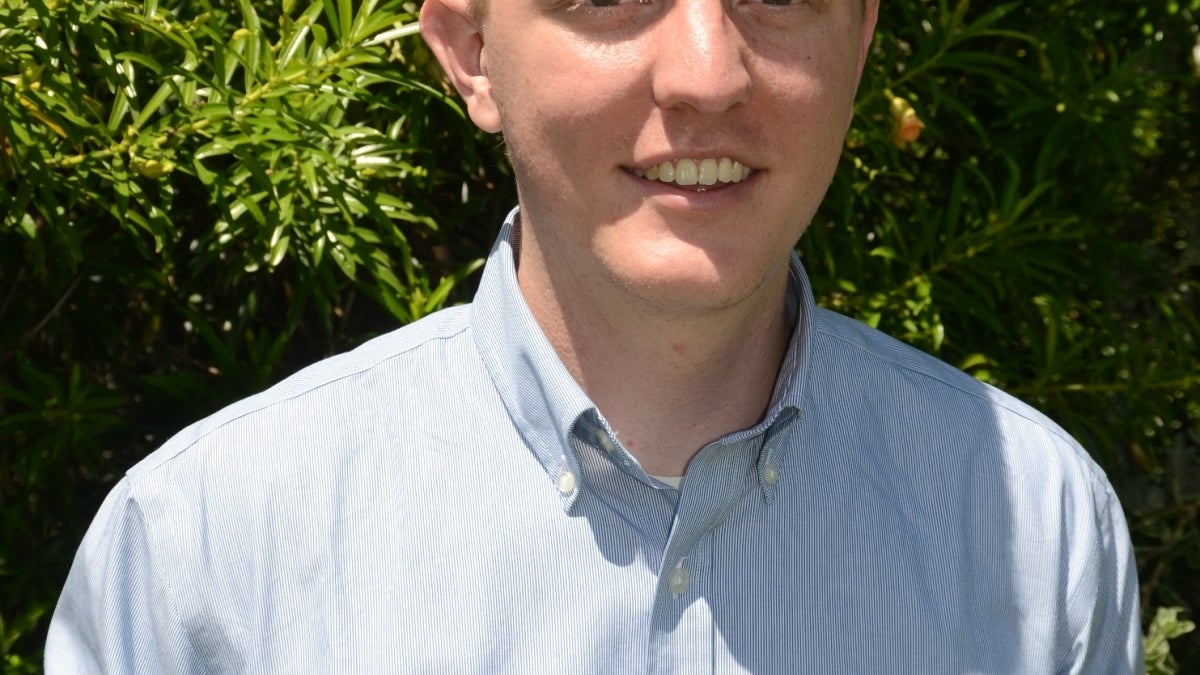Editor's note: This is part of a series of profiles for spring 2016 commencement. See the rest here.
What do brains and bassoons have in common? Perhaps only a psychology and music double major like Peter Whitehead could answer that question. Similar to many bassoon players, Whitehead started his mastery of the woodwinds as a clarinet player who moved to the bassoon in the seventh grade at his Mesa, Arizona, school. Going to ASU seemed a clear choice and as a new freshman, Whitehead had decided to study music therapy where the overlapping interests between psychology and music becomes a little more clear.
By his sophomore year, Whitehead had started working in two of the Department of Psychology’s cognitive science research labs where he became interested in how the human brain processes information and how unique or novel stimuli affect attention. But, Whitehead's interests didn’t stop with earning bachelor's degrees this spring in the College of Liberal Arts and Sciences and the Herberger Institute for Design and the Arts — during his undergraduate career at ASU he also worked in Dr. Corianne Rogalsky’s Speech and Hearing Sciences research lab in the College of Health Solutions where he gained functional magnetic resonance imaging experience at the Barrow Neurological Institute.
According to Dr. Gene Brewer, Whitehead's psychology mentor, “Peter's academic interests revolve around the manner in which the cognitive system overtly and covertly coordinates behavior to achieve goals. He’s not only a talented musician but an incredible scholar who also has three first author manuscripts under review which represents a major achievement for any undergraduate student.”
“What’s exciting about cognitive science are the translational applications and the treatment implications for many disorders where cognitive control or attention focus may be impaired like schizophrenia, autism, ADHD, Alzheimers, and Parkinson’s Disease,” Whitehead said.
Just recently, Whitehead was recognized by the National Science Foundation with an honorable mention for the Graduate Fellowship Research Program and has also earned the James B. Duke Scholarship for his upcoming doctoral studies in cognitive neuroscience at Duke University.
Question: What was your “aha” moment, when you realized you wanted to study the field you majored in?
Answer: I don’t think there was really an “aha” moment. I had been working in a lot of cognitive control projects in Dr. (Christopher) Blais’ EEG Lab and in Dr. Brewer’s Memory and Attention Control Lab for a couple of years and became really interested in what they were studying. So, I started asking questions and reading more about the topic. There are a lot of questions left to be answered and I find the topic interesting.
Q: What’s something you learned while at ASU — in the classroom or otherwise — that surprised you, that changed your perspective?
A: Plans change as you go along and it’s important to be flexible with them.
Q: Why did you choose ASU?
A: I chose ASU for a few reasons, some more practical than others. ASU has a great psychology department as well as a great music school. For what I was interested in, ASU was the best choice. It allowed me to be able to pursue my academic endeavors while still being able to develop my skills as a musician.
Q: What’s the best piece of advice you’d give to those still in school?
A: Talk to your professors and get involved in research. One of the best decisions I ever made at ASU was to join Dr. Brewer’s lab. Dr. Brewer and Dr. Blais are fantastic mentors, and I learned a lot from them.
Q: What was your favorite spot on campus, whether for studying, meeting friends or just thinking about life?
A: If I wasn’t in lab, I was in a practice room, and more often than not, I was in lab. I’m not sure if that qualifies as a favorite spot on campus.
Q: If someone gave you $40 million to solve one problem on our planet, what would you tackle?
A: I’m not sure I’m qualified to handle or manage $40 million dollars, so probably give it to a charity like Oxfam or Doctors Without Borders.
More Science and technology

Podcast explores the future in a rapidly evolving world
What will it mean to be human in the future? Who owns data and who owns us? Can machines think?These are some of the questions…

New NIH-funded program will train ASU students for the future of AI-powered medicine
The medical sector is increasingly exploring the use of artificial intelligence, or AI, to make health care more affordable and…

Cosmic clues: Metal-poor regions unveil potential method for galaxy growth
For decades, astronomers have analyzed data from space and ground telescopes to learn more about galaxies in the universe.…
